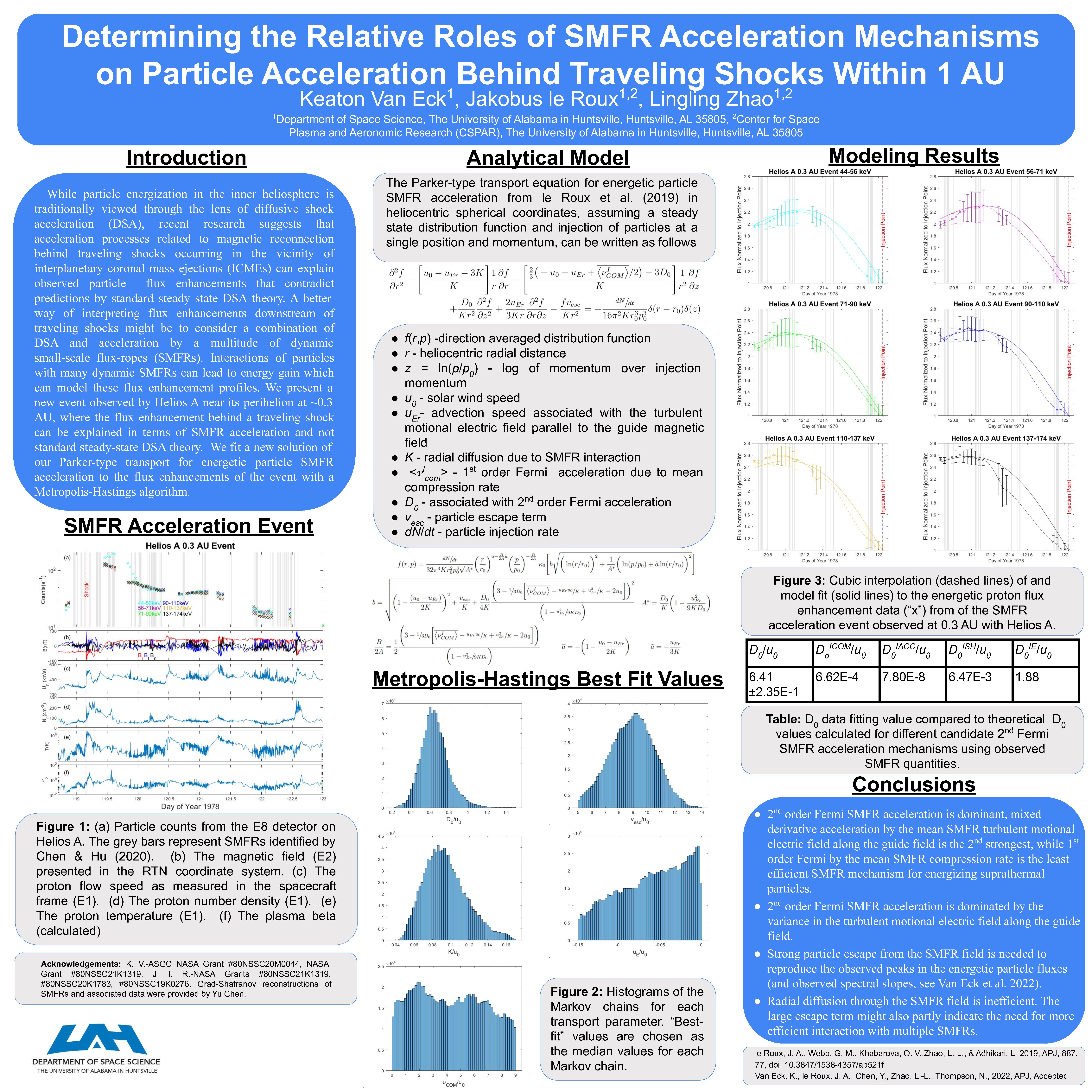Authors: Keaton Van Eck (UAH), Jakobus le Roux (UAH), Lingling Zhao (UAH)
Traditionally, diffusive shock acceleration (DSA) has been invoked to explain energetic
particle flux enhancements in the large-scale solar wind. However, recent studies suggest that
acceleration processes related to magnetic reconnection behind traveling shocks occurring in the
vicinity of interplanetary coronal mass ejections (ICMEs), which are a major factor in space
weather, can explain observed flux enhancements that contradict predictions by standard steady
state DSA theory. A better way of interpreting flux enhancements in the vicinity of traveling
shocks might be to consider a combination of DSA and acceleration by dynamic small-scale
flux-rope (SMFR) downstream. To build up support for this new paradigm, data from the Helios
A spacecraft has been analyzed to reveal two new SMFR flux enhancement events closer to the
Sun than reported in any previous study. We developed a new comprehensive analytical solution
of our Parker transport equation for energetic particle acceleration by dynamic SMFRs in
spherical geometry that includes all SMFR mechanisms in the transport theory. We identified the
most probable dominant SMFR acceleration mechanism for these two new events by combining
the use of a Metropolis-Hastings algorithm to fit the observed flux-enhancement data with
Grad-Shafranov reconstruction to determine SMFR properties. Our results indicate that 2nd
order Fermi acceleration by the turbulent ideal MHD electric field parallel to the SMFR guide
field is most likely responsible for the observed enhanced energetic particle fluxes.


